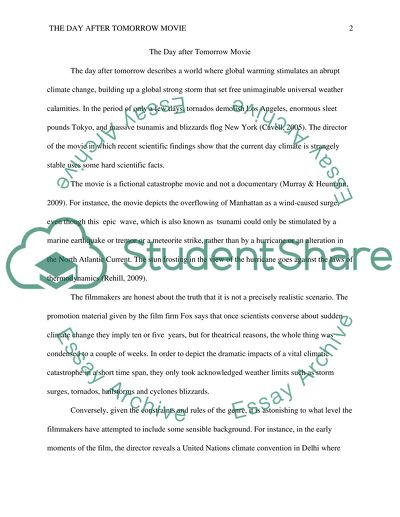Cite this document
(Analysis of The Day after Tomorrow Movie Review, n.d.)
Analysis of The Day after Tomorrow Movie Review. Retrieved from https://studentshare.org/visual-arts-film-studies/1618077-writers-chioce
Analysis of The Day after Tomorrow Movie Review. Retrieved from https://studentshare.org/visual-arts-film-studies/1618077-writers-chioce
(Analysis of The Day After Tomorrow Movie Review)
Analysis of The Day After Tomorrow Movie Review. https://studentshare.org/visual-arts-film-studies/1618077-writers-chioce.
Analysis of The Day After Tomorrow Movie Review. https://studentshare.org/visual-arts-film-studies/1618077-writers-chioce.
“Analysis of The Day After Tomorrow Movie Review”, n.d. https://studentshare.org/visual-arts-film-studies/1618077-writers-chioce.


